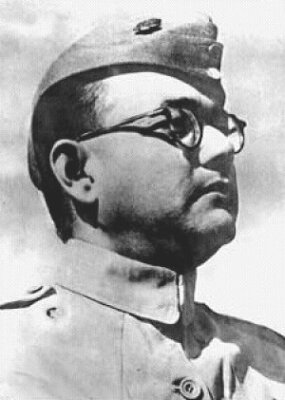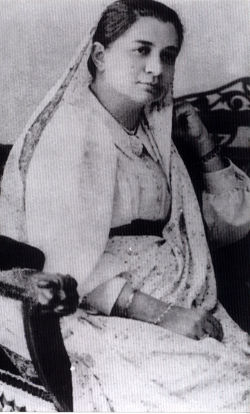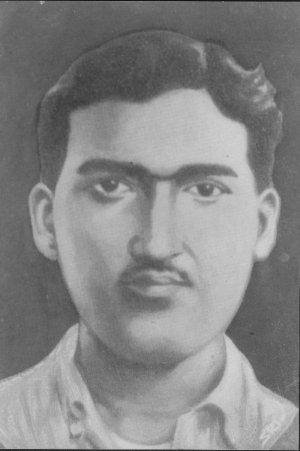Worlds Independence Day
Independence Day for India

India's Independence
Day is celebrated on 15 August to commemorate its independence from British
rule and its birth as a sovereign nation on that day in 1947. The day is a
national holiday in India. All over the country, flag-hoisting ceremonies are
conducted by the local administration in attendance. The main event takes place
in New Delhi, where the Prime Minister hoists the National Flag at the Red Fort
and delivers a nationally televised speech from its ramparts. In his speech, he
highlights the achievements of his government during the past year, raises
important issues and gives a call for further development. The Prime Minister
also pays his tribute to leaders of the freedom struggle.
Road
to independence
On 3 June 1947, Viscount Lord
Mountbatten of Burma, the last British Governor-General of India, announced the
partitioning of the British Indian Empire into India and Pakistan, under the
provisions of the Indian Independence Act 1947. At the stroke of midnight, on
14 August 1947, India became an independent nation. This was preceded by Pandit
Jawaharlal Nehru's famous speech titled Tryst with Destiny.
At the stroke of the midnight hour, when the world
sleeps, India will awake to life and freedom. A moment comes, which comes but
rarely in history, when we step out from the old to the new, when an age ends,
and when the soul of a nation, long suppressed, finds utterance..... We end
today a period of ill fortune, and India discovers herself again.
Celebrations
The Prime Minister of India hoists
the Indian flag on the ramparts of the historical site, Red Fort, Delhi, on
August 15. 15 August is a national holiday in India. Government Offices are lit
up. Flag hoisting ceremonies and cultural programs take place in all the state
capitals. In the cities around the country the national flag is hoisted by
politicians in their constituencies. In various private organisations the flag
hoisting is carried out by a senior official of that organisation.All over the
country, flags are given out to citizens who wear them proudly to show their
patriotism towards India. Schools and colleges around the country organise flag
hoisting ceremonies and various cultural events within their premises, where
younger children in costume do impersonations of their favourite characters of
the Independence era.They also have a parade. Families and friends get together
for lunch or dinner, or for an outing. Housing colonies, cultural centres,
clubs and societies hold entertainment programs and competitions, usually based
on the Independence Day theme. Most national and regional television channels
screen old and new film classics with patriotic themes on Independence Day.
India's Most Famous Freedom Fighters
Mohandas Karamchand Gandhi
2 October 1869 – 30 January 1948)
was the pre-eminent political and spiritual leader of India during the Indian
independence movement. He pioneered satyagraha—resistance to tyranny through mass
civil disobedience, a philosophy firmly founded upon ahimsa, or total
nonviolence, which helped India to gain independence, and inspired movements
for civil rights and freedom across the world. Gandhi is often referred to as
Mahatma Gandhi and in India also as Bapu. He is officially honoured in India as
the Father of the Nation; his birthday, 2 October, is commemorated there as
Gandhi Jayanti, a national holiday, and worldwide as the International Day of
Non-Violence.Vallabhbhai Patel
Bal Gangadhar Tilak
Bal Gangadhar Tilak was one of the firebrand freedom fighters of India. He gave
the slogan- "Swaraj is my
birthright and I shall have it". To serve the cause of freedom and
countrymen Tilak founded schools and published newspapers. Tilak was famous as
one of the trios- Bal, Pal and Lal. People loved him and accepted him as their
leaders and so he was called Lokmanya Tilak.
Ram Prasad Bismil
Ram Prasad Bismil was one of those young revolutionaries who laid down their
life for the sake of the motherland. Bismil was a member of the Hindustan
Republican Association and an important member of the group that was involved
in the Kakori train dacoity.
Bhagat Singh
The name of Bhagat Singh is synonymous with sacrifice, courage, bravery and
vision. By sacrificing his life just at the age of 30 Bhagat Singh became an
inspiration and symbol of the heroism. Along with other revolutionaries, Bhagat
Singh founded the Hindustan Socialist republican Association. To warn the
British government of its misdeeds, Bhagat Singh threw a bomb in the Central
Legislative Assembly. By embracing death at an young age Bhagat Singh became a
symbol of sacrifice and courage and made a place in the hearts of every Indian
for ever.
Khudiram Bose
Khudiram Bose was one of those young revolutionaries and freedom fighters whose
deeds of bravery and sacrifice have become the subject of many a folk lore. He
was one of those brave men who challenged the British rule in their own style.
At the age of nineteen, he became a martyr, with "Vande Mataram" on his lips.
Ashfaqulla Khan
Ashfaqulla Khan was one of the firebrand and young revolutionaries, who laid
down their life for the sake of the motherland. An important member of the
Hindustan Republican Association, Khan, along with his associates executed the
train dacoity at Kakori and was subsequently hanged by the British.
Madame Cama
Madam Cama was one of the greatest women freedom fighters of India and promoted
the cause of Indian freedom movement outside India. She was the one who first
unfurled India's flag at an international assembly. She discarded the life of
luxury and lived an exile- to serve the motherland.
Jatin Banerjee
Jatin Banerjee is popularly known as "Bagha
Jatin" for his fearlessness and courage. Jatin Banerjee's name figures
among brave freedom fighters of India. His name is a symbol of fearlessness and
courage to millions of Indians.
Maulana Abul Kalam Azad
Maulana Abul Kalam Azad was an active member of the Indian National congress
and a great freedom fighter. Maulana Azad took part in most of the important
movements. He presided over the special session of Congress in September 1923
and at 35 years of age, was the youngest man to be elected the President of the
Congress.
Gopal Krishna Gokhale
Gopal Krishna Gokhale was one of the moderate leaders of the Indian National
Congress. He was the political Guru of Mahatma Gandhi, the father of the
nation. He also presided over the annual session of the Congress at Benaras in
the year 1905. He was also opposed to the entry of the extremists in the
Congress.
Jawaharlal Nehru
Pt Jawaharlal Nehru was one of the important people, who struggled for the
freedom of India and became the first prime minister of free India. He was also
the author of the famous book "Discovery
of India". J L Nehru was extremely fond of children and was fondly
called "Chacha Nehru". It
was under his leadership that India embarked on the planned pattern of economic
development.
Subhas Chandra Bose
Known as Netaji (leader), S C Bose was a fierce freedom fighter and a popular
leader on the political horizon in pre-independence India. Bose was elected the
President of the Indian National Congress in the year 1937 and 1939. He founded
the Indian National Army and raised the slogan- "Delhi Chalo" and "Tum
Mujhe Khoon Do main Tumhe Ajadi Doonga". For his anti- British remarks
and activities, Bose was jailed 11 times between 1920 and 1941. He was the
leader of the youth wing of the Congress Party.
Find your Friend
Are you Interested ?
Mohandas Karamchand Gandhi

Mohandas Karamchand Gandhi 2 October 1869 – 30 January 1948) was the pre-eminent political and spiritual leader of India during the Indian independence movement. He pioneered satyagraha—resistance to tyranny through mass civil disobedience, a philosophy firmly founded upon ahimsa, or total nonviolence, which helped India to gain independence, and inspired movements for civil rights and freedom across the world. Gandhi is often referred to as Mahatma Gandhi and in India also as Bapu. He is officially honoured in India as the Father of the Nation; his birthday, 2 October, is commemorated there as Gandhi Jayanti, a national holiday, and worldwide as the International Day of Non-Violence.Vallabhbhai Patel
Gopal Krishna Gokhale

Gopal Krishna Gokhale was one of the moderate leaders of the Indian National Congress. He was the political Guru of Mahatma Gandhi, the father of the nation. He also presided over the annual session of the Congress at Benaras in the year 1905. He was also opposed to the entry of the extremists in the Congress.
Subhas Chandra Bose

Known as Netaji (leader), S C Bose was a fierce freedom fighter and a popular leader on the political horizon in pre-independence India. Bose was elected the President of the Indian National Congress in the year 1937 and 1939. He founded the Indian National Army and raised the slogan- "Delhi Chalo" and "Tum Mujhe Khoon Do main Tumhe Ajadi Doonga". For his anti- British remarks and activities, Bose was jailed 11 times between 1920 and 1941. He was the leader of the youth wing of the Congress Party.
Jawaharlal Nehru

Pt Jawaharlal Nehru was one of the important people, who struggled for the freedom of India and became the first prime minister of free India. He was also the author of the famous book "Discovery of India". J L Nehru was extremely fond of children and was fondly called "Chacha Nehru". It was under his leadership that India embarked on the planned pattern of economic development.
Maulana Abul Kalam Azad

Maulana Abul Kalam Azad was an active member of the Indian National congress and a great freedom fighter. Maulana Azad took part in most of the important movements. He presided over the special session of Congress in September 1923 and at 35 years of age, was the youngest man to be elected the President of the Congress.
Jatin Banerjee

Jatin Banerjee is popularly known as "Bagha Jatin" for his fearlessness and courage. Jatin Banerjee's name figures among brave freedom fighters of India. His name is a symbol of fearlessness and courage to millions of Indians.
Madame Cama

Madam Cama was one of the greatest women freedom fighters of India and promoted the cause of Indian freedom movement outside India. She was the one who first unfurled India's flag at an international assembly. She discarded the life of luxury and lived an exile- to serve the motherland.
Ashfaqulla Khan

Ashfaqulla Khan was one of the firebrand and young revolutionaries, who laid down their life for the sake of the motherland. An important member of the Hindustan Republican Association, Khan, along with his associates executed the train dacoity at Kakori and was subsequently hanged by the British.
Khudiram Bose

Khudiram Bose was one of those young revolutionaries and freedom fighters whose deeds of bravery and sacrifice have become the subject of many a folk lore. He was one of those brave men who challenged the British rule in their own style. At the age of nineteen, he became a martyr, with "Vande Mataram" on his lips.
Bhagat Singh

The name of Bhagat Singh is synonymous with sacrifice, courage, bravery and vision. By sacrificing his life just at the age of 30 Bhagat Singh became an inspiration and symbol of the heroism. Along with other revolutionaries, Bhagat Singh founded the Hindustan Socialist republican Association. To warn the British government of its misdeeds, Bhagat Singh threw a bomb in the Central Legislative Assembly. By embracing death at an young age Bhagat Singh became a symbol of sacrifice and courage and made a place in the hearts of every Indian for ever.
Ram Prasad Bismil

Ram Prasad Bismil was one of those young revolutionaries who laid down their life for the sake of the motherland. Bismil was a member of the Hindustan Republican Association and an important member of the group that was involved in the Kakori train dacoity.
Bal Gangadhar Tilak

Bal Gangadhar Tilak was one of the firebrand freedom fighters of India. He gave the slogan- "Swaraj is my birthright and I shall have it". To serve the cause of freedom and countrymen Tilak founded schools and published newspapers. Tilak was famous as one of the trios- Bal, Pal and Lal. People loved him and accepted him as their leaders and so he was called Lokmanya Tilak.
